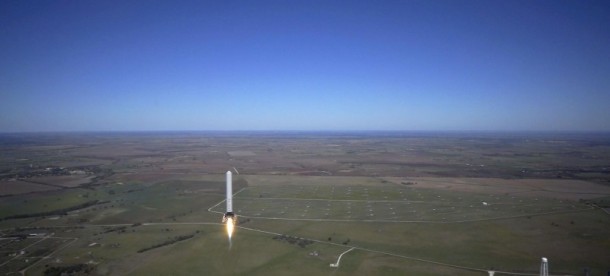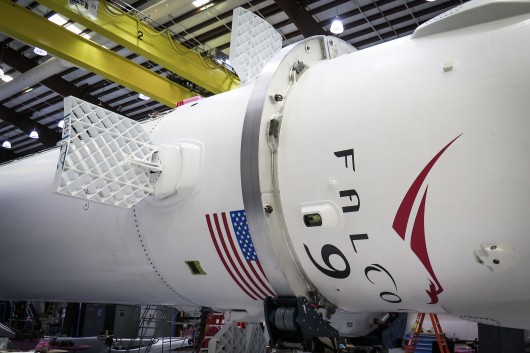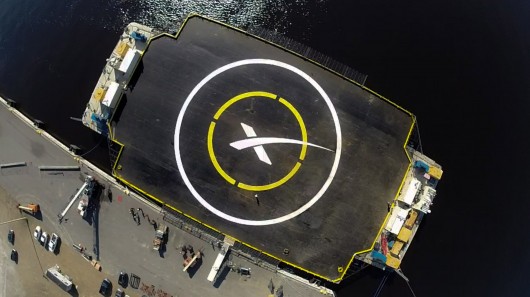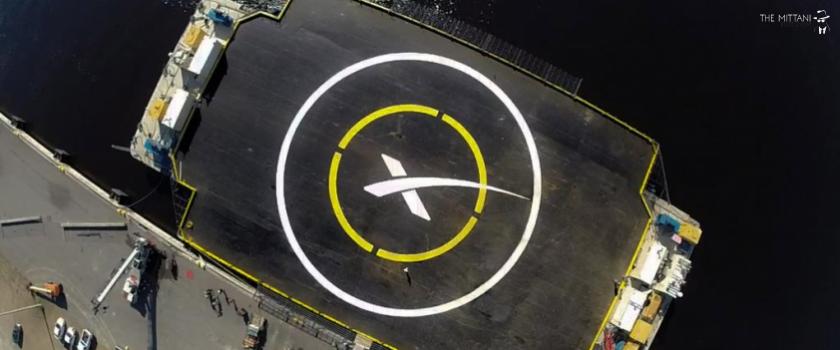This Friday, Dragon CRS-5 mission will lift off from Space Launch Complex 40 at Cape Canaveral Air Force Station. It will be using a Falcon 9 v1.1 rocket for this purpose. A successful launch will result in the unmanned Dragon spacecraft being able to carry experiments and supplies to ISS. However, there is nothing new about this part. What is truly amazing is the fact that SpaceX has confirmed that it will be attempting a powered and precise landing of the Falcon 9 booster on a sea barge.
According to SpaceX, the attempt only has a 50% chance of success, however, it will still work as a major achievement in the company’s plan to come up with a completely reusable launch system. The barge has been named as ‘autonomous spaceport drone ship’ and has been custom built. It measures 300 x 100 ft. and features wings that extend to a width of 170 ft. The platform will be positioned in Atlantic to avoid any sort of danger, therefore there is no need to anchor it. It will, instead, make use of thrusters that are computerized and similar to the ones that are used for station keeping by marine oil drilling ships.
Falcon 9 upon re-entering the atmosphere shall perform a number of engine burns starting from a ‘boost-back’ burn that will be used for putting it on course for landing site. The subsequent burns include a supersonic retro propulsion burn to slow it down and the final burn to reduce its speed to 2 m/s while the landing legs deploy for a touchdown on barge. According to calculations and speculations, the company is hopeful that the touchdown will be a soft one.
As of now, SpaceX has managed two soft landings on the ocean of previous Dragon launches and on a number of land-based test flights. However, the Friday’s test will be on a different level and shall come with a greater risk and will require a far greater degree of accuracy. The last two attempts were carried out with an accuracy of 10 km, however, the upcoming test requires an accuracy of 10 m. Falcon 9 has been equipped with an assembly of 4 independent hypersonic grid fins in an X-wing configuration that enables the firm to slow down the descent from hypersonic speeds and renders control of roll, yaw and pitch while also imparting control of thrust from the gimbaled liquid-fueled engines.
During the descent, the 14 storey rocket will be travelling at 1,300 m/s and shall be slowed down to 250m/s. The controlling of Falcon under such conditions is like ‘trying to balance a rubber broomstick on your hand in the middle of a wind storm.’ SpaceX hopes to collect critical information from this experiment, no matter what the outcome is.


